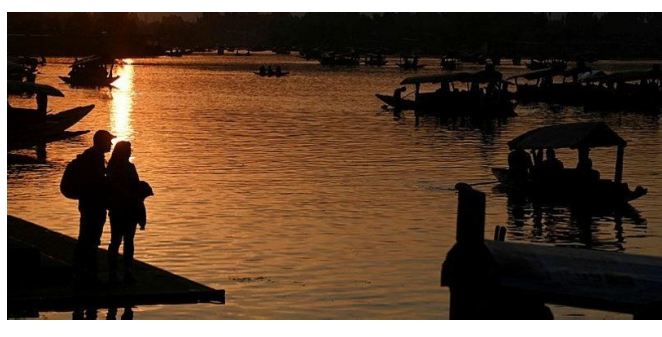Mohammad Ramzan Itoo, a 54-year-old in Indian administered Kashmir pushed his bicycle cart every day, selling hot served masaal tchott –boiled chickpeas served with bread.
He has been doing this for the last 28 years. On World Food Day on Oct. 16, Anadolu Agency took a peek into the unique street foods of Kashmir.
Itoo said preparation for making masaal begins during the night or early hours of the morning.
Then different kinds of chutney, or sauces, are prepared. “It mostly goes with radish chutney mixed with fresh curd, green chili, coriander, pepper and salt, and lastly soft bread, locally called ‘Lavasa,’ is used for the wrapping,” he said.
It is served almost everywhere in the region. But Itoo said the capital city of Srinagar has the major base for this street food.
“For this food, you have customers everywhere. It has no chemicals or preservatives. It just comes from our home kitchen,” he said.
SHRINES AND FOOD
The Kashmir region is also known as Pir Vaer, or Land of Saints, and has a number of revered shrines and mosques scattered across the regional landscape that holds an epitome of respect and reverence among residents.
But the places of worship offer a glimpse of varying foods that hold a unique position in Kashmiri culture and traditions.
Zeabah Akhtar- a woman in her mid-50s sits at the main gate entering Dargah Shareef — a shrine in Srinagar that houses holy relics of Prophet Muhammad.
The shrine is on the left bank of Dal Lake and is considered one of the holiest places in the region.
Akhtar said it is her favorite place to be. “I feel peace here. Besides I’m earning my livelihood,” she told Anadolu Agency.
Wearing a long traditional cloak, called pheran, with a white scarf around her head, she smiles and greets every customer asking for mongh masala — a steamed black gram dish that has basic ingredients like red chili and salt.
It is usually brought in a big wooden basket and served hot to customers and devotees visiting the shrine.
“By God’s grace, I earn well. I am a hundred times grateful to my God that I am earning with my own hands and I am not a burden on anyone,” Akhtar says.
OTHER UNIQUE FOODS
In the vicinity of the Hazratbal shrine, several vendors were seen selling various fried snacks.
Abdul Aziz Dar was busy marinating small fish, lotus stems in flour added with some salt.
Monji gaade, or fish snack and nadir monji — lotus stem snack — are famous snacks that are particularly unique to Kashmir. There are other varieties like potato snacks, dried pea snacks called til kar that is prepared and relished with different chutneys.
Dar not only fries the snacks, but he also makes halwa sooji (semolina) and paratha — huge bread fried in hot oil.
He said during the Urs, or revered days, there is a huge rush of customers and people love to take the delicacies home.
THE TASTY CANDIES
As one starts chewing khand gazri — cylindrical candies made from flour dough and ghee-dipped in sugar syrup, it is all good for the taste buds.
The same goes with colored puffs made from rice, sugar and food color. As soon as you put it into your mouth it dissolves and leaves behind a mild sugary taste.
Other sweet foods include Besrakh — sweet round candy balls sprinkled with dry fruits, and lal shangram-a delicacy made by mixing flour, sooji (semolina) and sugar that is deep-fried in ghee.

















